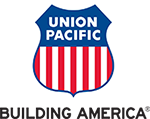WWI America
Stories from a turbulent nation
WWI America presents the stories of a divisive and transformational America told through original artifacts, images, voices, music, hands-on exploration, and multimedia presentations.
Before the War
Americans watched warily as Europe’s armies went to war in the summer of 1914. Although more than two years would pass before the country engaged militarily, the United States began providing support for war-torn Europe almost immediately. Advocates for “preparedness” clashed with newly formed groups seeking peace.
- A recreated newsstand features a multimedia show on the ongoing war in Europe before American entry.
- At a wharf interactive visitors explore the variety and scale of U.S. products shipped overseas, including horses, locomotives, steel, weapons, and donations of grain and flour.
- A short animation and original artifacts from the sinking of the RMS Lusitania — including a deck chair from the ship — show the threats of submarine warfare.
- A multimedia environment tells stories of the Great Migration of African Americans from the rural South to northern cities, and how these migrants sought jobs in booming war industries.
America At War, 1917–1918
Within a compressed 19-month period beginning in April 1917, the United States amassed a military force of more than four million men. Nearly two million served overseas. Opposition to the war continued, but the government stirred up patriotism through its Committee on Public Information. War recruitment surged and dissent was forcibly suppressed.
- A Red Cross ambulance sets the scene for an immersive battlefield environment where visitors hear stories from soldiers and nurses.
- Original artifacts and stories from “doughboys” like Charles Whittlesey and Jose de la Luz Saenz. Whittlesey, of the famed “Lost Battalion,” was trapped behind German lines for almost a week. Saenz, a Mexican-American soldier, fought for democracy in France and against racial segregation in the United States.
- Artifacts and images show the impact of new, terrifying technologies, such as poison gas, machine guns, tanks, and airplanes.
- An interactive quiz reveals the government’s swift suppression of dissent from Emma Goldman, Eugene V. Debs, and others.
- The struggle for woman suffrage was intertwined with American involvement in the war. A multimedia environment features original artifacts and stories from the movement.
- At a music store with an interactive Victrola and in a sit-down movie theater, visitors explore popular culture of the era.
After the War
With the signing of the armistice on November 11, 1918, Americans celebrated victory even while extraordinary challenges loomed. Anarchist bombings, racial violence, labor unrest, and a return of the influenza epidemic made 1919 one of the most volatile years in American history.
- A recreated walk-through victory arch emphasizes the brutal contrasts of 1919: civic celebrations clashing with bombings and riots.
- Images show some of the thousands of strikes during the year, focusing on the Seattle General Strike.
- A recreated hospital ward shows the peak of the influenza outbreak in 1919.
- A setting suggestive of a veteran’s hospital features original prosthetics and rehabilitation artifacts.
Witnesses
Throughout the exhibit, visitors encounter “Witnesses,” people who represent the complex and divergent stories of the day. Famous and little-known stories include social reformer Jane Addams, African American activist W. E. B. DuBois, evangelist Billy Sunday, WWI volunteer nurse and driver Alice O’Brien, movie star Mary Pickford, and entrepreneur-activist Madam C. J. Walker. Original artifacts, quotes, and stories remind visitors of the powerful role of individuals in an era characterized by mass movements.
WWI America was produced by the Minnesota Historical Society in partnership with the National Constitution Center, the National World War I Museum at Liberty Memorial, the Oakland Museum of California, and the Bullock Texas State History Museum.
WWI America has been made possible in part by major grants from the National Endowment for the Humanities: Exploring the human endeavor.
Support for the Bullock Museum's exhibitions and education programs is provided by the Texas State History Museum Foundation.
Sponsored by The Albert and Ethel Herzstein Hall Fund.
Additional support provided by Union Pacific.

Lender
Minnesota History Center
On View
At the museum: 03/16/2019 - 08/11/2019